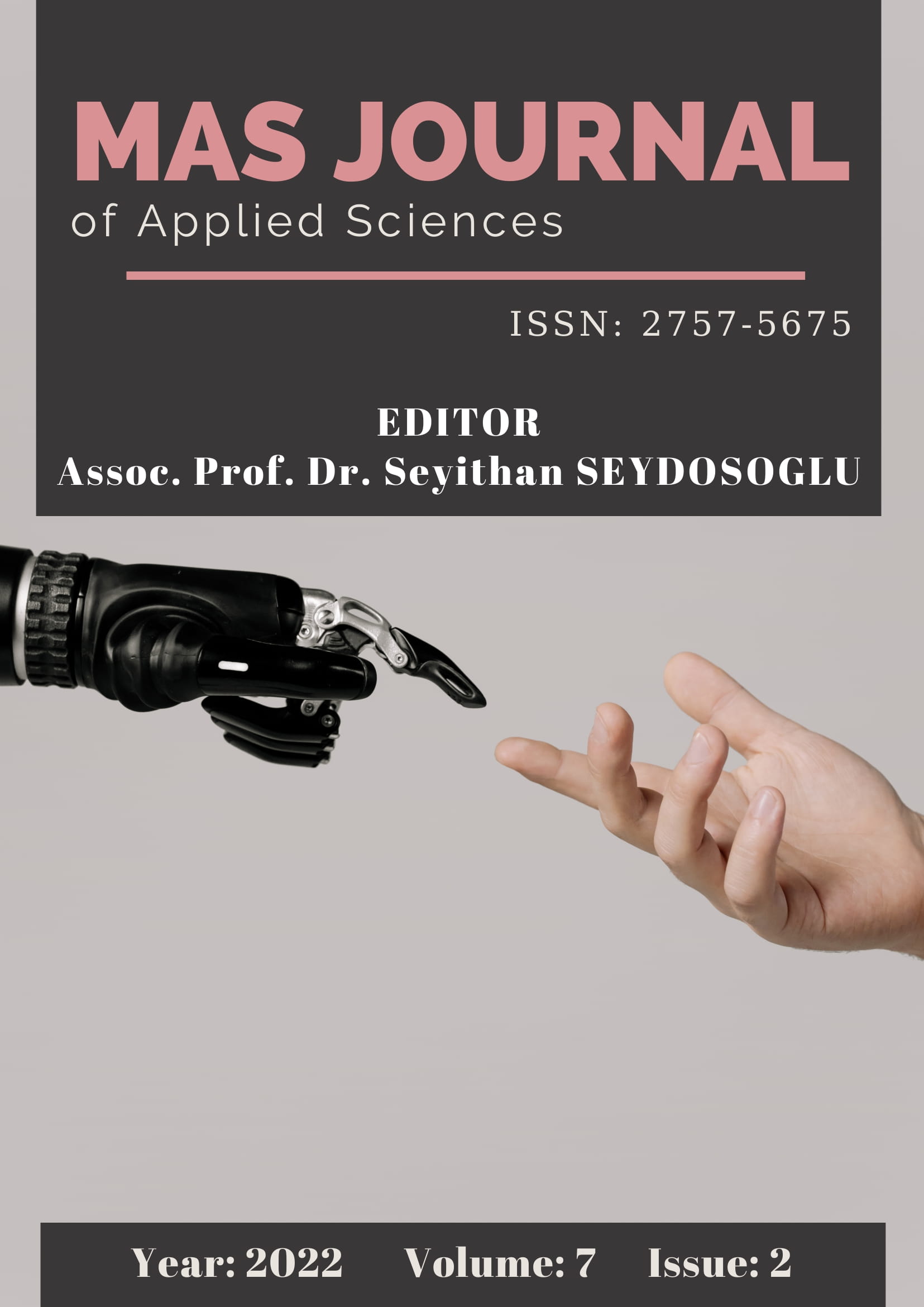Investigation of Some Bread Wheat (Triticum aestivum L.) Genotypes In Terms of Morphological, Physiological, Yield And Quality In Bed Planting System
DOI:
https://doi.org/10.52520/masjaps.v7i2id167Keywords:
Bread wheat, Bagasse yield, bed planting, genotypAbstract
The Covid-19 virus epidemic, which has been seen all over the world since 2019, has clearly shown how important wheat production is, like the production of many plants in human nutrition. In this process, it has been observed that countries have difficulties in meeting the necessary basic needs of their own citizens and cannot meet the demand, and it is aimed to meet the food needs by increasing plant production in order to take precautions against such worldwide epidemics. In this study, some bread wheat genotypes (local genotypes, commercial varieties, CIMMYT lines and Dicle University Faculty of Agriculture lines); In the bed planting system, it is aimed to achieve maximum yield and quality with supportive irrigation and increased fertilization. In SPAD measurements, the genotype with the highest value was DZE-7 (60.93), while the genotype with the lowest value was YE-47 (42.92). The genotype with the highest value in terms of normalized vegetation index (NDVI) was observed in Avaric with 0.82 and the lowest value with 0.62 in Sagittario genotypes. In terms of number of days to head, the earliest was 14 STEMRRSN 6037 genotype with 138.7 days, while the latest was DZE-3 genotype with 162.56 days. While the genotype with the highest value was YE-98 with 557.71 spikes/m2, the genotype with the lowest value was YE-68 with 239.67 spikes/m2. While the genotype with the highest grain yield was obtained from the DZE-3 genotype with 375.74 kg/da, the lowest value was found in the Beşköprü genotype with 89.43 kg/da. While the genotype with the highest protein ratio value was obtained from the YE-98 genotype with 19.37%, the lowest value was found in 13 STEMRRSN 6024 genotypes with 13.13%, and the genotype with the highest wet gluten ratio value was YE-98 with 43.36%. while the lowest value was determined with 29.4% in 13 STEMRRSN 6024 genotypes.
References
Atak, M. 2017. Buğday ve Türkiye buğday köy çeşitleri. Mustafa Kemal Üniversitesi Ziraat Fakültesi Dergisi, 22 (2): 71-88.
Aydoğan, S., Şahin, M., Göçmen, A., Demir, B., Yıldırım, T., Hamzaoğlu, S. 2020. Yağışa dayalı koşullarda bazı ekmeklik buğday çeşitlerinin (Triticum aestivum L.) verim ve bazı kalite özelliklerinin değerlendirilmesi. KSÜ Tarım ve Doğa Dergisi, 23(3): 713-721. DOI: https://doi.org/10.18016/ksutarimdoga.v23i53104.660925
Bayhan, M., Özkan, R., Albayrak, Ö., Akıncı, C. 2019. Aşırı kurak sezonda ekmeklik buğday genotiplerinin performanslarının test edilmesi. 2. Uluslararası Mardin Artuklu Bilimsel Araştırmalar Kongresi, Eylül 2019, Mardin. S, 166.
Bilgin, O., Korkut, K.Z. 2005. Bazı ekmeklik buğday (Triticum aestivum L.) çeşit ve hatlarının tane verimi ve bazı fenolojik özelliklerinin belirlenmesi. Tekirdağ Ziraat Fakültesi Dergisi, 2 (1): 57-65. DOI: https://doi.org/10.1501/Tarimbil_0000000580
Bonfil, D.J., Karnieli, A., Raz, M., Mufradi, I., Asido, S., Egozi, H., Hoffman, Schmilovitch, A.Z. 2004. Decision support system for ımproving wheat grain qualıty in the mediterranean area of Israel. Field Crops Research, 89: 153-163. DOI: https://doi.org/10.1016/j.fcr.2004.01.017
Khan, N., Jan, A., Khan, A.I., Khan, A.M., Khan, I. 2002. Response of wheat cultivars to varying seeding rates under rainfed conditions. Asian Journal of Plant Sciences, 4: 343–345. DOI: https://doi.org/10.3923/ajps.2002.343.345
Kılıç, H., Aktaş, H., Kendal, E. 2020. Ekmeklik buğday genotiplerinin (Triticum aestivum L.) yüksek sıcaklık şartlarında verim ve bazı kalite özellikleri yönünden değerlendirilmesi. KafkasÜniversitesi Fen Bilimleri Dergisi, 13 (1): 1-18. DOI: https://doi.org/10.29132/ijpas.721877
Koca, Y.O., Dere, Ş., Erekul, O. 2011. İleri ekmeklik buğday hatlarında tane verimi ve bazı kalite özelliklerinin belirlenmesi. ADÜ Ziraat Fakültesi Dergisi, 8 (2): 15-22.
Özen, S., Akman, Z. 2015. Yozgat ekolojik koşullarında bazı ekmeklik buğday çeşitlerinin verim ve kalite özelliklerinin belirlenmesi. Süleyman Demirel Üniversitesi Ziraat Fakültesi Dergisi, 10 (1): 35-43.
Rahman, M. M., Hossain, A., Hakim, M. A., Kabir, M. R., Shah, M.M.R. 2009. Performance of wheat genotypes under optimum and late sowing condition. International Journal of Sustain Crop Production, 4(6): 34-39.
Soomro, U.A., Rahman, M.U., Odhano, E. A., Gul, S., Tareen, A.Q. 2009. Effects of sowing method and seed rate on growth and yield of wheat (Triticum aestivum). World Journal of Agricultural Sciences, 5(2): 159–162.
Şahin, M., Göçmen, A., Aydoğan, S., Yakışır, E. 2016. Orta Anadolu sulu koşullarında bazı kışlık ekmeklik buğday genotiplerinin verim ve kalite performanslarının belirlenmesi. Tarla Bitkileri Merkez Araştırma Enstitüsü Dergisi, 25 (Özel sayı-1): 19-23. DOI: https://doi.org/10.21566/tarbitderg.279721
Thapa, S., Rudd, J.C., Xue, Q., Bhandari, M., Reddy, S.K., Jessup, K.E., Liu, S., Devkota, R.N., Baker, J., Baker, S. 2019. Use of NDVI for characterizing winter wheat response to water stress in a semi-arid environment. Journal of Crop Improvement, 1542-7528. DOI: https://doi.org/10.1080/15427528.2019.1648348
Tonk, F., İştipliler, D., Tosun, M. 2017. Bazı ekmeklik buğday (Triticum aestivum L.) genotiplerinde özellikler arası ilişkiler ve path analizi. Ege Üniversitesi Ziraat Fakültesi Dergisi, 54(1): 85-89. DOI: https://doi.org/10.20289/zfdergi.297980
Yıldırım, M., Kılıç, H., Kendal E., Karahan, T. 2011. Applicability of chlorophyll meter readings as yield predictor in durum wheat. Journal of Plant Nutrition, 34(2): 151-164. DOI: https://doi.org/10.1080/01904167.2011.533319
Zeybek, A., Özkan, Y., Tan, E. 2005. Farklı ekim sıklığı ve azot dozlarının Ziyabey-98 ekmeklik buğday çeşidinde verim ve verim komponentleri üzerine etkisi. Türkiye 6. Tarla Bitkileri Kongresi Araştırma Sunusu, 1:105-109.
Downloads
Published
How to Cite
Issue
Section
License
Copyright (c) 2022 The copyright of the published article belongs to its author.

This work is licensed under a Creative Commons Attribution-NonCommercial 4.0 International License.


